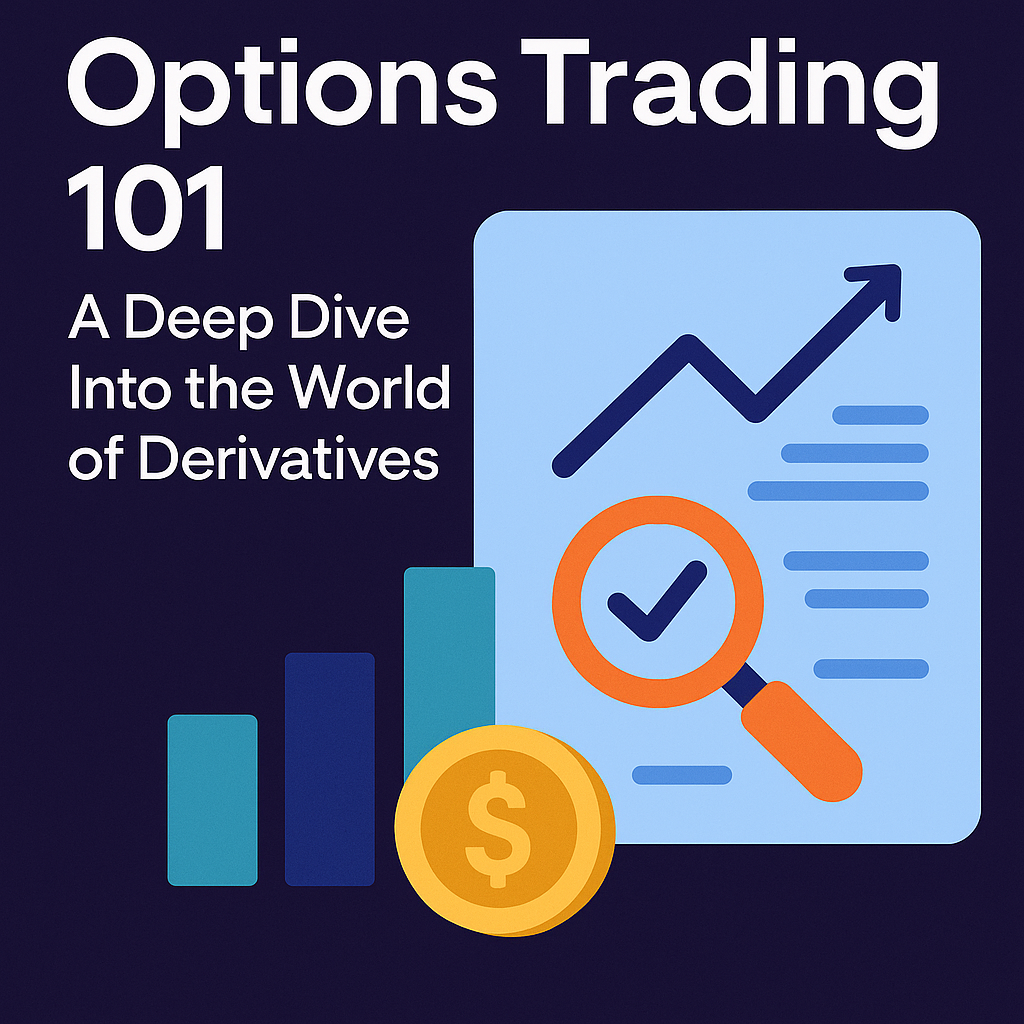Options Trading 101: A Deep Dive Into the World of Derivatives
Introduction: What Are Options?
Options are financial derivatives that give traders the right, but not the obligation, to buy or sell an underlying asset at a specific price before or on a certain date. Originally created to hedge risk, options have evolved into a sophisticated tool used by retail and institutional traders alike to generate income, reduce portfolio volatility, and leverage directional views.
Whether you’re new to the markets or a seasoned trader looking to explore options, understanding the foundational concepts is essential.
Why Do Options Exist?
Options trading dates back to ancient Greece and 17th-century Japan, but modern exchange-traded options started in 1973 with the launch of the Chicago Board Options Exchange (CBOE). The reason options exist is to provide flexibility, leverage, and risk management in financial markets.
Primary Purposes:
- Hedging: Protecting a portfolio from downside risk (e.g., buying a put option).
- Speculation: Profiting from directional moves (e.g., bullish or bearish strategies).
- Income Generation: Selling options to collect premium (e.g., covered calls, cash-secured puts).
The Basics: Calls and Puts
There are two types of options:
1. Call Options
- Give the holder the right to buy an asset at a specified price (strike) before expiration.
- Buyers profit if the stock goes up.
2. Put Options
- Give the holder the right to sell an asset at a specified price before expiration.
- Buyers profit if the stock goes down.
Key Terms:
- Strike Price: The agreed-upon price for buying or selling.
- Expiration Date: The deadline for exercising the option.
- Premium: The cost of the option contract.
- In The Money (ITM): The option has intrinsic value.
- Out of The Money (OTM): The option has no intrinsic value yet.
The Four Core Trades
Every options strategy is a combination of these four foundational trades:
- Buy Call — Bullish, limited risk, unlimited reward.
- Sell Call — Bearish/neutral, limited reward, unlimited risk.
- Buy Put — Bearish, limited risk, large reward.
- Sell Put — Bullish/neutral, limited reward, significant risk.
Popular Options Strategies
1. Covered Call
Hold 100 shares of stock and sell 1 call option to generate income.
2. Cash-Secured Put
Sell a put option while holding enough cash to buy the stock at strike price. Great for acquiring shares at a discount.
3. Vertical Spreads
Combine buying and selling calls or puts at different strikes. Defined risk and reward.
4. Iron Condor
A neutral strategy using 4 legs (2 calls, 2 puts). Designed to profit in sideways markets.
5. Calendar Spreads
Exploit time decay between near-term and longer-term options with the same strike.
Risks of Options Trading
While options offer flexibility, they come with risks:
- Leverage Risk: Small moves in the underlying can create large swings in value.
- Theta Decay: Time erodes the value of options.
- Liquidity Risk: Some options are thinly traded.
- Assignment Risk: When short options are exercised.
Rewards of Options Trading
- Leverage: Control more capital with less money.
- Defined Risk: Most strategies allow known maximum loss.
- Versatility: Profit in any market direction (up, down, or sideways).
- Income: Generate consistent premium through selling strategies.
How AI is Changing Options Trading
Modern trading platforms like Option Logix use artificial intelligence to:
- Analyze historical trade data and patterns
- Recommend optimal strike and expiration selections
- Detect emotional bias in journaling notes
- Generate automated performance reports and expectancy curves
AI-powered journaling and analytics reduce the guesswork and accelerate the learning curve.
Options Trading: Who Is It For?
Options trading is for:
- Retail Traders seeking leverage or income
- Professional Traders building delta-neutral portfolios
- Investors using options for downside protection
Anyone with proper education, risk controls, and discipline can benefit from options trading.
Final Thoughts: Start With a Journal
If you want to get serious about trading options, the best place to start is by tracking your trades. Logging each entry, exit, strategy, and emotion builds the data foundation required for long-term improvement.
Option Logix gives you the tools to:
- Log trades in seconds
- Visualize performance by setup
- Analyze win rate, risk/reward, expectancy, and more
- Get smart suggestions with AI-driven feedback


